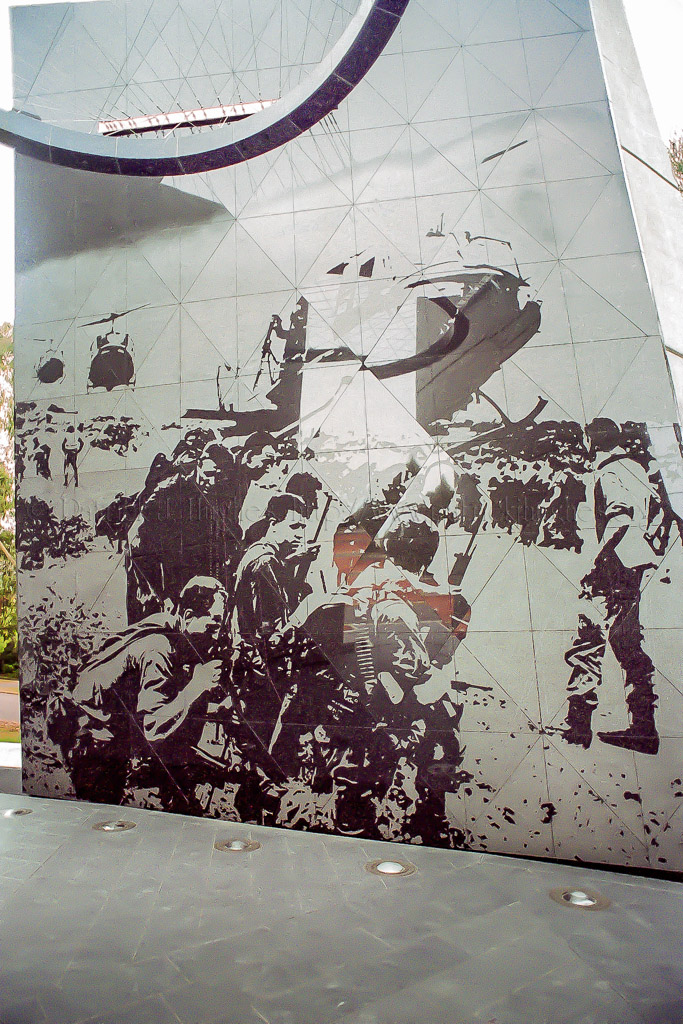On the inner face of the western stele is etched a larger than life representation of members of the 7th Battalion Royal Australian Regiment being airlifted by U.S. helicopters from the fishing village of Lang Phuoc Hai to return to Nui Dat. It is a blow-up of an Army public relations photo taken by Sgt. Mike Coleridge and preserves a typical real life image of the conflict. The image was engraved in situ on 400 pieces of variable sized, triangular South Australian Imperial Black granite. Eighty-one one meter photographs were stuck on top of two layers of sandblasting tape and, in a very delicate operation; an engraver's tool was used to cut through the photographs and two layers of tape without touching the stone. The exposed stone was sandblasted to a depth of 1 mm to create the grey effect and the tape was then removed, leaving behind the image.


Share Share Tweet Share Pin It Email